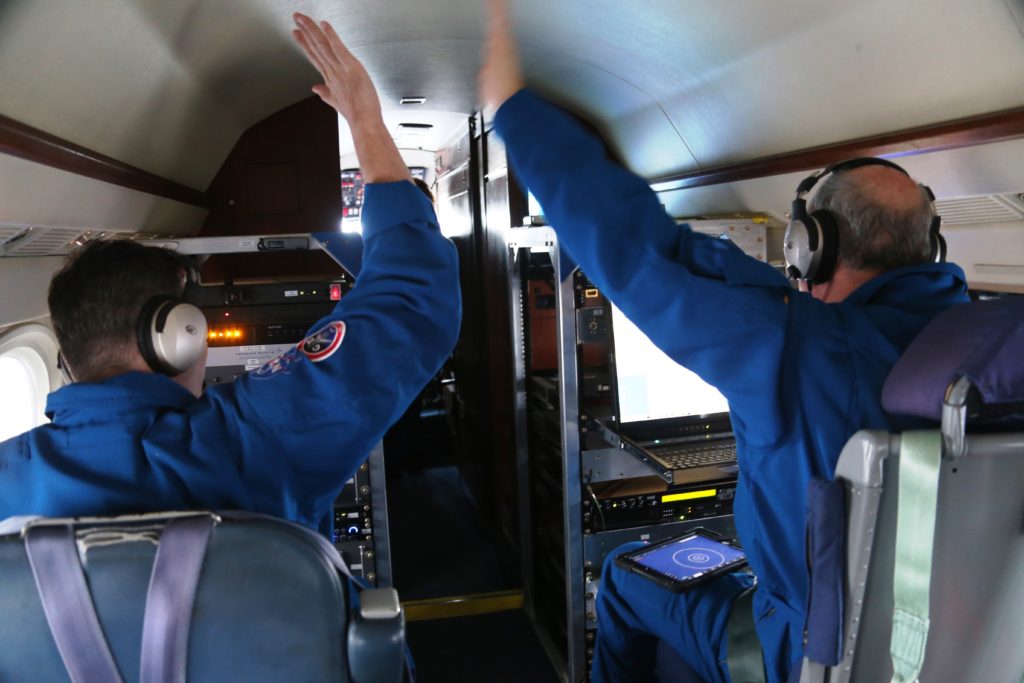
by Carol Rasmussen / KEFLAVIK, ICELAND /
The first thing you notice about the Oceans Melting Greenland (OMG) crew is the shared memories. “Where did we get that great pizza—Thule?”
“No, at the little restaurant in Svalbard, remember?”
The next is a story that begins “When we were in . . . ” could continue anywhere: Kazakhstan, Alaska or the Middle East. This is a team that has been working together well for a long time, in more far-flung locations than most world travelers even dream of.
The OMG crew is a textbook example of a high-performance team: a group with diverse and complementary expertise, well-defined jobs, ambitious goals and a strong commitment to the mission and to each other. On their arrival in Iceland, the group consisted of two mechanics/ground crew, two pilots, three flight engineers, the project manager and the principal investigator. A few people have swapped in and out since then, but each team member has distinct responsibilities, and each is essential to keep the mission running. “It’s been a great team effort here,” summarized flight engineer Phil Vaughn. “We’ve got the coordination down to a real good point where everybody knows what each other is doing.”
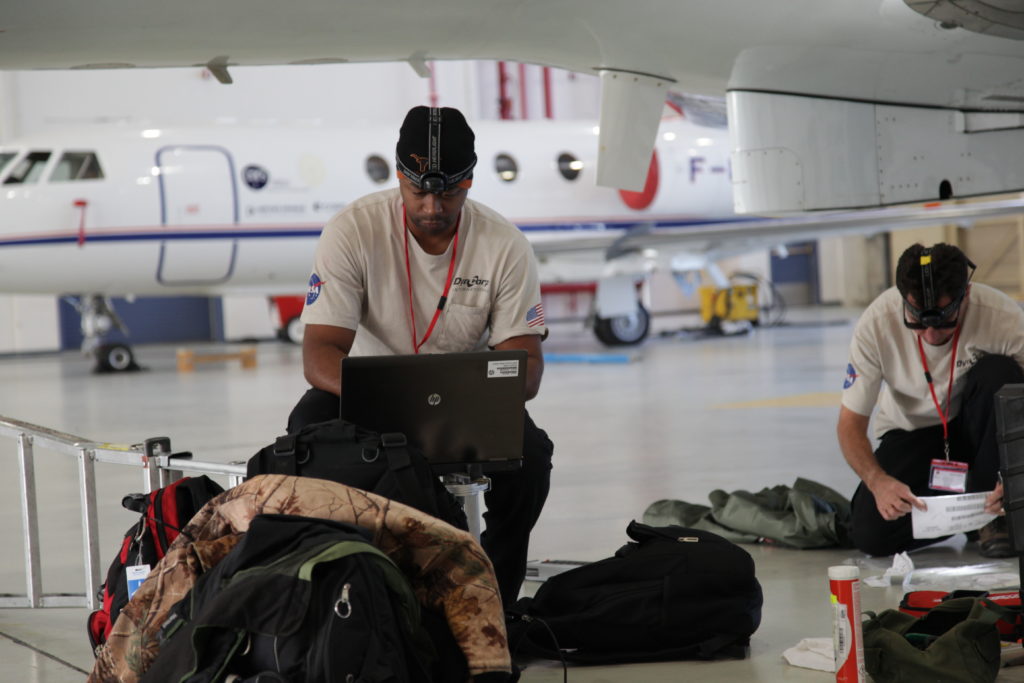
Johnny Scott and Dave Fuller are the ground crew, responsible for preflight and postflight checks and routine maintenance. Scott has worked on the NASA G-III for eight or nine years. The preflight check, which takes an hour or more for the two crew members, includes a walkaround where they simply apply their trained eyes to the aircraft inside and out. “After you’ve looked at the airplane so long, you’ll catch things fast,” Scott said. “You’ll say, ‘Hey, that’s not right.’ You’ll investigate. Most of the time you don’t find anything [significant], but you might find a leak or a crack, or something out of place.”
Arctic cold hasn’t added a lot of additional maintenance chores, Fuller said, because the planes are in heated hangars at their bases. The main difference Is air pressure. Just as you change your car’s tire pressure in winter in a cold climate, the plane systems also need to change. It’s not just tires: it’s things like the brake accumulator pressure—the reserve air needed for emergency brakes. “If the conditions are set correctly on the ground, then the plane will be fine while flying,” he explained.
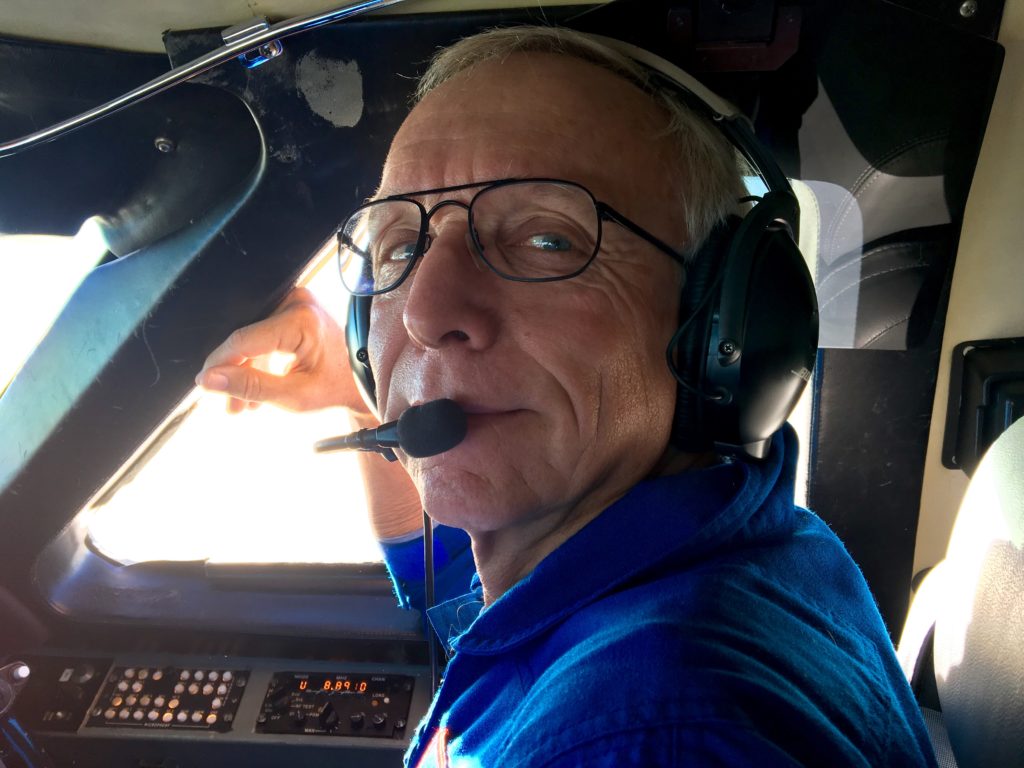
Flying is the business of the pilots, and so are all the concerns that go with it—weather, flight plans, fuel management and a multitude of details. Bill Ehrenstrom is the pilot in charge. He and Scott Reagan have flown so many hours over Greenland already that they were concerned they would hit the 30-day limit of 100 hours, so they were joined in Iceland by Chris Condon. “We’ve been lucky to see things that a lot of people don’t ever get to see,” Ehrenstrom said about flying all those hours. “But the weather has been a challenge. We haven’t been able to drop probes in some place because of the weather, and it hasn’t always been the greatest at the sites.”
All three pilots had former careers in the military, and Reagan is planning to undertake a third career soon that some people would find even more intimidating than his first two: teaching high school history or physics.
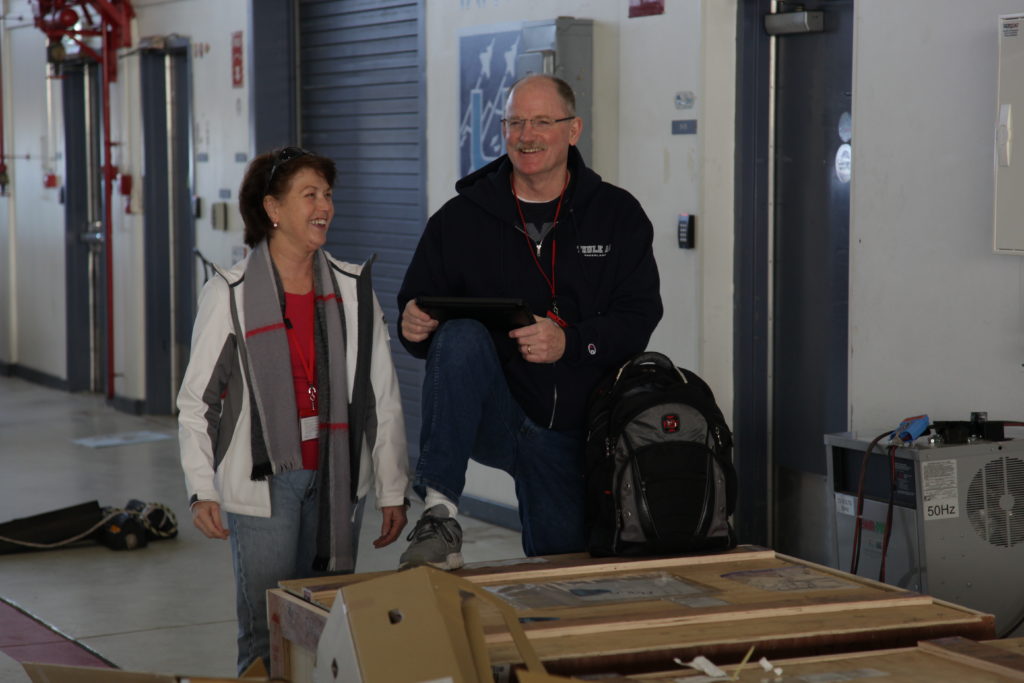
“Never in my life did I think I’d get to drop things out of the airplane when we were out flying,” said flight engineer Vaughn. A flight engineer is responsible knowing all the plane’s electrical and computer systems and monitoring them during the flights, as well as supporting the pilots. On top of that, it’s safe to say that Vaughn and Terry Lee are the world’s experts on dropping probes out of a G-III—this is the first experiment ever to do such a thing, and the aircraft had to be specifically modified to allow it. “It’s kind of a rush,” Lee said.

“Project manager” sounds like a desk job, but not on a NASA field project. Steve Dinardo doesn’t just track expenses; he tracks probe data at the airborne computer as well as shipboard operations in support of OMG and myriad other details. “To get this to all hang together and work sometimes is a miracle,” he said. Dinardo started at NASA working on space missions. “Aircraft projects are a lot more fun than spacecraft and a lot more challenging. I get to see the whole project from Step 1 to Step 100. That’s something you don’t get with spacecraft.”
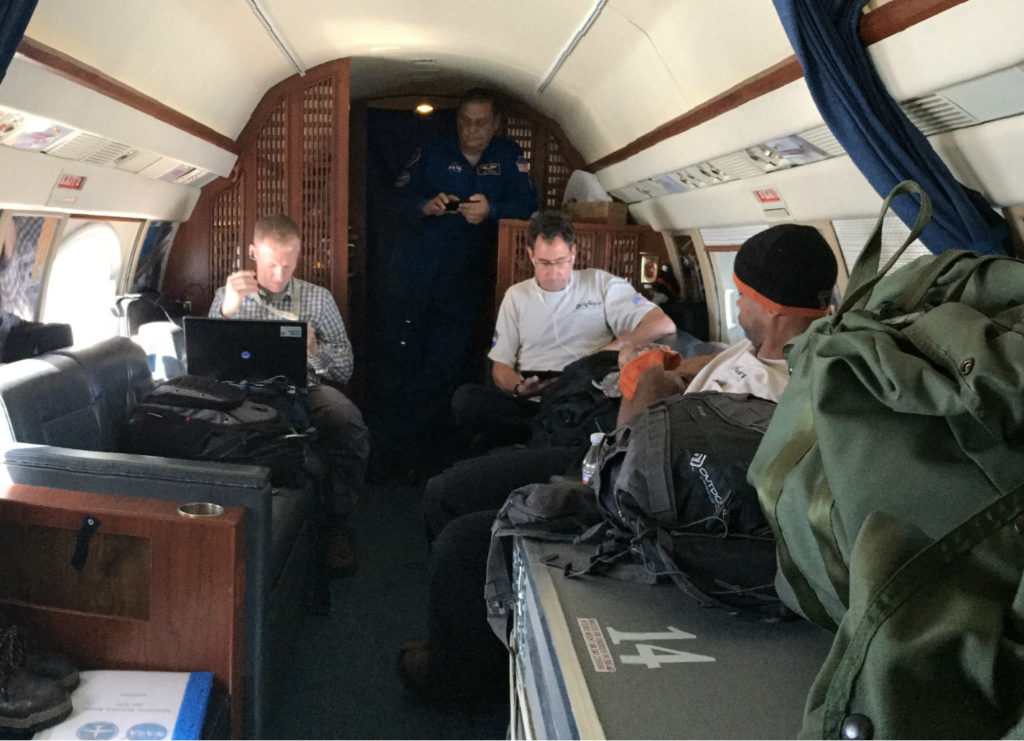
The last team member is principal investigator Willis. OMG is his brain child, and he’s responsible for overall execution, as well as helping with science-related decisions in the field such as choosing good alternate sites for probe drops if the original choice is too iced in. Willis has integrated well with the rest of the crew, and he’s thrilled with their work. “I couldn’t have asked for a better team to support this mission,” he said. “It’s been a spectacular ride.”
